The Source for this information is James Thomas Benn IV, of Farmville, VA. It was completed as part of his application for membership into the Sons of Confederate Veterans. It was provided to the author on January 25, 2016, via email communication.
—–
Joseph John Benn was born 15 April 1829 in Gaston, North Carolina. On 11 April 1862, in Norfolk, Virginia, this North Carolina farmer mustered into the 41st Virginia Infantry, 2nd Company E from the State Militia where he collected a $50 bounty. 2nd Company E was known as Captain Lauren’s “Confederate Grays” under Mahone’s Brigade in the Longstreet Corp. In March and April of 1862 he drilled in Norfolk. On 10 May 1862, he and the rest of his division boarded trains for Petersburg when Norfolk was abandoned to Union Forces.
J.J. Benn, as he was known, spent most of May 1862 in the hospital at General Camp Winder in Richmond. On 23 May 1862 he was transferred back to his regiment at Petersburg from whence he fought at Malvern Hill and Seven Pines. He was back in the hospital from 15 September 1862 until 13 October 1862 suffering from chronic diarrhea as was the bane of many a soldier. On 20 October 1862 he was furloughed to Gaston, North Carolina to recuperate.
He returned to duty in January of 1863 and wintered at United States Ford on the Rappahannock, 16 miles west of Fredericksburg. At the time, the 41st Virginia Infantry listed 305 men present. The 41st was with Army of Northern Virginia at Chancellorsville. On 26 June 1863, his unit passed the Mason-Dixon line. They arrived at Gettysburg, Pennsylvania on 2 July 1863, at the northern end of Seminary Ridge.
J.J. Benn went on to fight in the Bristoe and Mine Run Campaigns, the Wilderness, and Cold Harbor. On 22 June 1864, he was with Mahone at the Jerusalem Plank Road Battle near Petersburg. The July 30 battle of the Crater made Mahone a famous General and brought with it recognition and prestige to all the regiments involved including the 41st Virginia.
J.J. Benn was taken prisoner 27 Oct 1864 at Boydton Plank Road Battle for control of the Weldon Railroad. He was transferred from City Point in Hopewell to Point Lookout Maryland and exchanged 17 January 1965 at Boulware’s Warf on the James River. On 6 February 1865 he was at the Battle of Hatcher’s Run. During the battle of Sayler’s Creek, Mohone’s division escaped capture and moved to the north side of the Appomattox River acting as rear guard. On 7 April 1865 the 41st fired the last shots of the war at Cumberland Church.
On 9 April 1865, Joseph John Benn was paroled at Appomattox with one package of clothing and a blanket. Of the 305 men present in 1863, only 10 officers and 98 other men remained of the 41st Virginia Infantry.
After the war he made his home near what is now Vultare, North Carolina where he was an agent for the Raleigh Gaston Railroad. His first child, a daughter was born nine months after he returned from the war on 20 January 1866. Joseph John Benn died 18 May 1912.
——-
TIMELINE:
Joseph John Benn
Born April 15, 1829; died May 18, 1912 at 83 years of age
Enlisted 11 Apr 62 from the state militia in Norfolk VA at 33 years old. $50 bounty due
Listed as a farmer from Gaston, NC.
After the war was an agent for the Raleigh Gaston Railroad
He and his wife had their home near what is now Vultare, NC
Captain Lauren’s “Confederate Grays” under Mahone’s Brigade under Longstreet’s Corps
March and April 1862 drilled in Norfolk
May 10th – 41st boarded trains for Petersburg when Norfolk was abandoned
10 May 62 General Hospital camp Winder Richmond VA
23 May 62 – transferred to Petersburg
Malvern Hill and Seven Pines
Gen Hospital Richmond VA 15 Sep 62 – 13 Oct 62
20 Oct 62 furloughed to Gaston NC for Chronic diarrhea
Jan 63 – Oct 64 listed as present
Wintered at United States Ford on the Rappahannock 16 miles west of Fredericksburg
41st had 305 men present
3 miles from Chancellorsville – fought there
May 7th camped near Fredericksbirg
June 22 in Charles Town (now WV)
June 26th past the Mason-Dixon Line
July 1st, left camp at Fayetteville PA to Gettysburg
Arrived July 2nd at the northern end of Seminary Ridge
Mahone’s Brigade scarcely used July 2nd and 3rd
Fought in the Bristoe and Mine Run Campaigns
May 4th left winter camp at Madison Run Station
May 6th battle of the Wilderness
May9th arrived at Spotsylvania
June 3rd at Cold Harbor
June 22nd Jerusalem Plank Road
July 30th battle of the Crater “made Mahone a famous general and brought with it recognition and prestige to all the regiments involved.
Taken prisoner 27 Oct 64 Weldon RR – Boydton Plank Road at Hatcher’s Run
31 Oct 64 transferred from City Point to Pt. Lookout MD
17 Jan 65 exchanged at Boulware’s Warf James River, VA
26 Jan 65 at Camp Lee Richmond VA
February 6th, second battle of Hatcher’s run
Mahone commanded an elite division of which the 41st was part.
April 6th – During the battle of Sayler’s creek, Mahone’s division escaped capture and moved to the north side of the Appomattox river acting as rear guard.
April 7th – fired last shots at Cumberland Church
9 Apr 65 Paroled at Appomattox w/ 1 package of clothing and a blanket along with 10 officers and 98 other men
First child, a daughter Mariah Ann Benn, born nine months later on Jan. 20, 1866
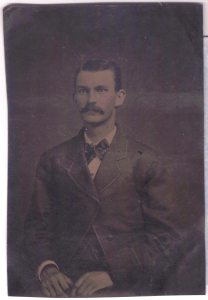




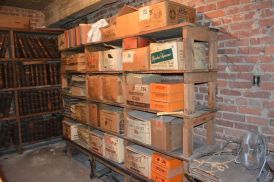


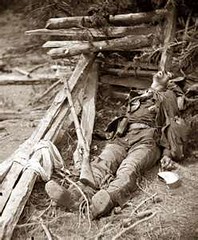

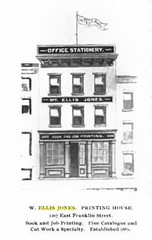






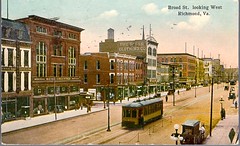
You must be logged in to post a comment.